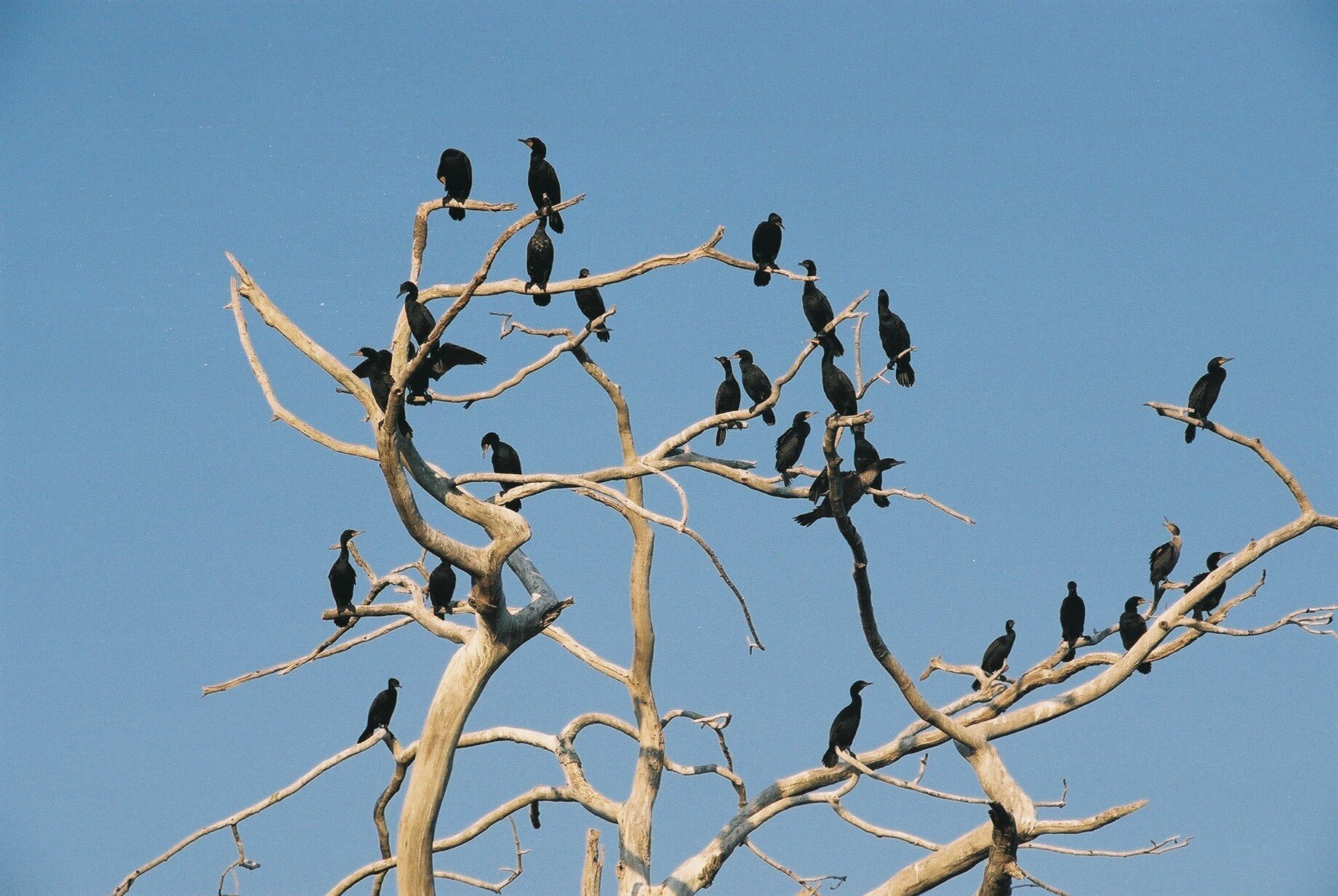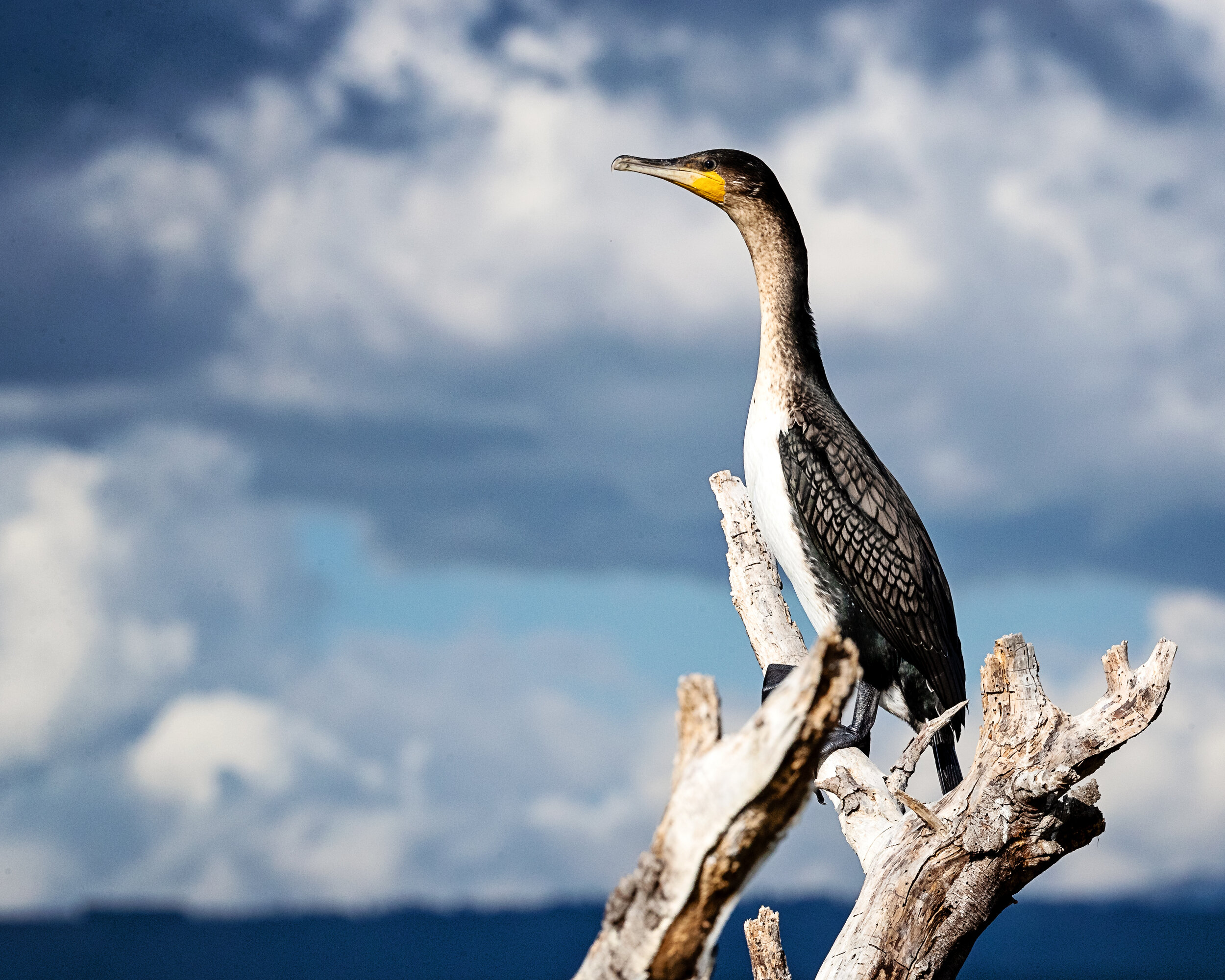
Cormorant Biology
The Double-crested cormorant (Phalacrocorax auritus) is a native North American waterbird. About the size of a small goose, they have vibrant jade green eyes that stand out remarkably against an iridescent green-black feathered body. Surrounding the long and slender hooked bill is a blazing path of orange-yellow facial skin. A small double crest of black and/or white feathers above the eyes are gained during the breeding season. Webbed feet allow swimming and diving in pursuit of fish but feathers are not waterproof and must be dried out. They often fly singly or in small flocks; flying in a single line or V-formation.
Double-crested cormorant (Phalacrocorax auritus)
Range
Cormorants in Canada range as far west as southern British Columbia and easterly to the Atlantic Coast including Newfoundland. In the US they are found across the country, as well as in Mexico and the Bahamas.
In Ontario, Double-crested cormorants are found throughout the Great Lakes and have a breeding range that extends north up to Southern James Bay and Lake Abitibi. They are known to have been a resident of Lake of the Woods since 1798 and the earliest “documented” nesting record for cormorants in Ontario is from Black Bay in Lake Superior in 1920. Cormorants that breed in Ontario typically spend winter months in southern United States.
Breeding
They are sexually mature by 3 years of age. In mating season, both male and females develop tufts of black and white feathers behind their eyes, giving them their name. Both male and female cormorants take care of the nest and young. Cormorants are a long-lived bird species and in the wild have been known to live for up to 23 years.
Nesting
Cormorants are a colonial nester selecting islands as breeding areas. Nests are found on the ground or within the upper branches of trees, directly adjacent to water. Cormorants lay an average of 3-4 pale greenish-blue eggs with a chalky covering.
Cormorants may be less abundant throughout their range than they were in the past.
Diet
In general, the cormorant’s diet is a reflection of where they feed. Within the Great Lakes the majority of their diet is composed of invasive species such as Alewives and Round Gobies, non-commercial fish such as sticklebacks and extremely abundant species such as Yellow Perch, as well as some aquatic insects.
Populations
Due to a continent-wide reduction in toxins, such as DDT, and invasive fish being an important food source in the Great Lakes, cormorant populations have been able to recover to some extent. Historical information suggests that cormorants may well be, overall, still less abundant throughout their range than they were in the past.
Cormorant Voices from the Grave: How Abundant Was Pre-Columbian Wildlife?
How and why damaging myths have prevailed in regards to the history of the Double-crested cormorant and their population size over time. Barry Kent MacKay.
Historic Populations of the Double-crested Cormorant (Phalacrocorax auritus): Implications for Conservation and Management in the 21st Century (2006) Linda Wires, Francesca Cuthbert, Waterbirds, 29 (1): 9-37. Details specific historic (pre-1900) breeding distribution of Double-crested cormorants in North America, and a discussion on conservation versus management goals.
Dawson, W. (1903) The birds of Ohio: A complete and scientific popular description of the 320 species of birds found in the state. This book describes the Double-crested cormorants appearance, nesting habits, range, and even details significant declines in their population numbers due to persecution from anglers and hunters.



